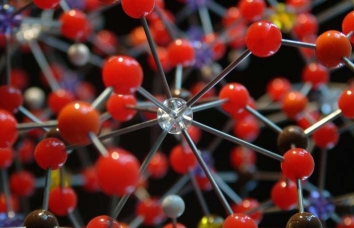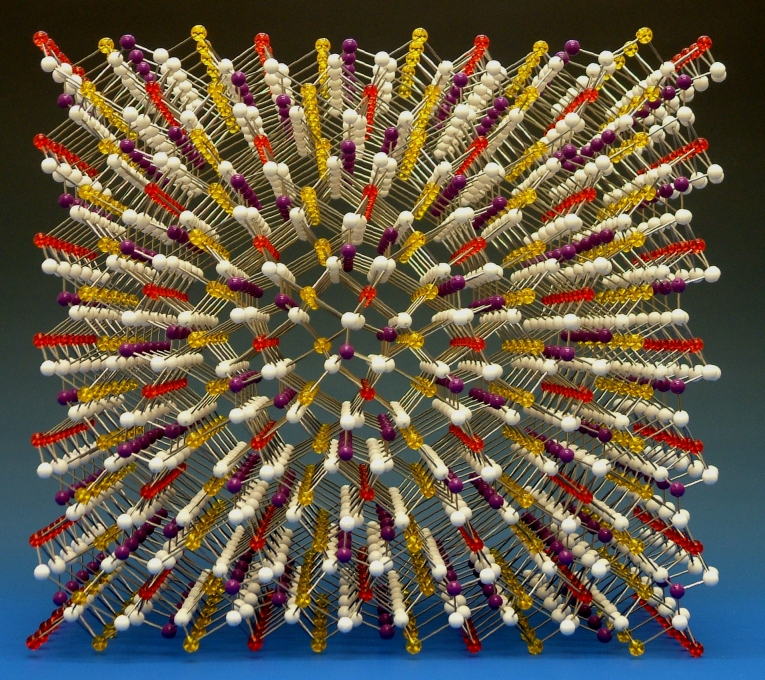
Detail of a Beevers crystal structure model


Detail of a Beevers crystal structure model
The vast majority of our models are supplied in pre-constructed form, and there is a very good reason for that - they are a serious challenge to construct without experience. We can, however, supply the models in kit form if you really want a challenge. We feel it only fair, though, to explain why this is not a good option for most people.
Our Beevers molecular models are made by first of all calculating the positions of all the bonds in each atom relative to a reference bond. Then, we take an acrylic ball, drill the 1.000mm reference hole and and then the remaining 1.000mm holes at the various values of θ and φ over the surface of the ball.
The bonds are then inserted, but these are made from 1.00+δ mm stainless steel rods, giving an interference fit that holds the rods very securely in position. The bond thus added is then inserted into the corresponding hole in a second ball and the process repeated until the model is complete.
Several factors in our construction make the process difficult for inexperienced builders.
First of all, the holes are not marked, so you need to be able to identify, for example, a hole drilled at 88°θ, 67°φ and to be able to make sure that you've not confused it for one drilled at 92°θ, -67°φ inamongst half a dozen other holes over the surface. This is often extremely difficult.
Secondly, inserting the rods is not easy - if you get the angle wrong or the ball slips, it will split or chip and needs to be discarded. Worse, if it slips into your finger, it's extremely painful!
Now, suppose you get the rod securely into the ball, but you then find you added it to the wrong hole? Well, good luck getting that rod out without damaging the ball! But even if you do manage it without obvious damage, the hole will have been expanded and the next time a rod is inserted, the fit won't be quite so secure. We normally reckon you could remove and reinsert a rod 3-4 times before it becomes too far expanded to securely accept a rod.
Unfortunately, in most cases there are no savings over having a pre-constructed model. The main reason is that, while we can construct a model in our workshop with skilled model builders using minimal shorthand instructions, we have to produce a new set of comprehensive instructions for any model that we haven't previously sold in kit form. That takes a lot of time.
Sometimes, you've really tried to build the model, but you've made mistakes and you're stuck. Well, we can always help out, but it's not necessarily easy - our experience is that, in many cases, it requires an almost total rebuild of the model and that can be more challenging than making a model from the start. . Any atoms that have been used in the construction and are not obviously in the correct position will almost certainly have to be discarded - it is far quicker to redrill replacement balls and use them than it is to attempt to determine the correct orientation for a ball that you don't know for sure is even the correct ball. So, yes, we can repair your model, but it can take time - and that costs - in the very worst case (which has ever happened yet, but it might), you could end up having to pay for most of a complete new model, but in most cases the repair and construction costs can be estimated at around half the cost of a pre-constructed model.
If, having read the above, you still want to have a go at making one of our models for yourself, we're more than happy to work with you to do that. Hopefully, with skill and understanding, you will have the immense satisfaction of making up a work of scientific art. Please contact us to discuss what you would like.

If you want a real challenge....